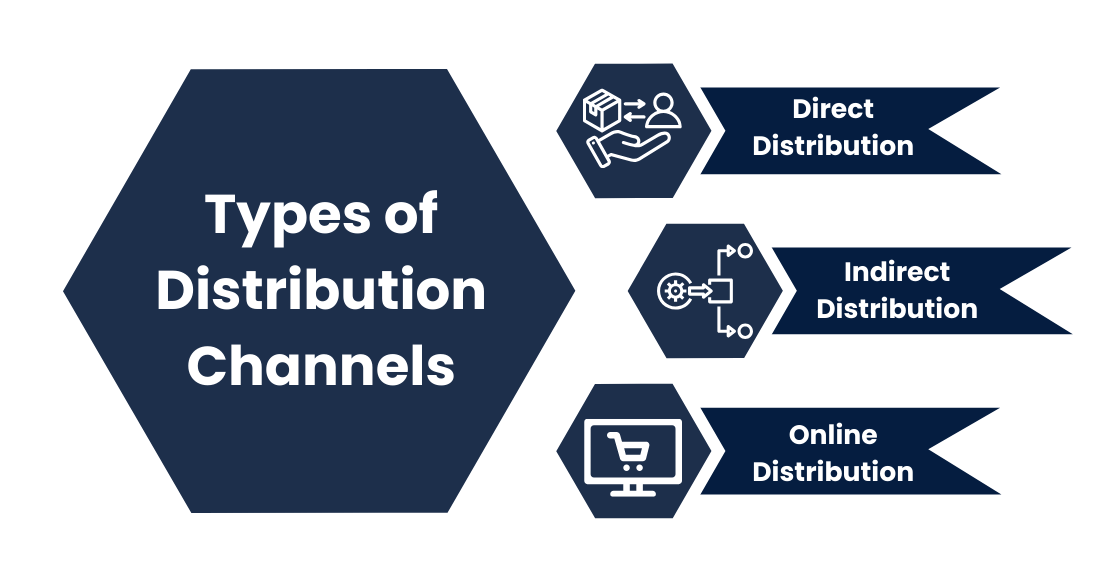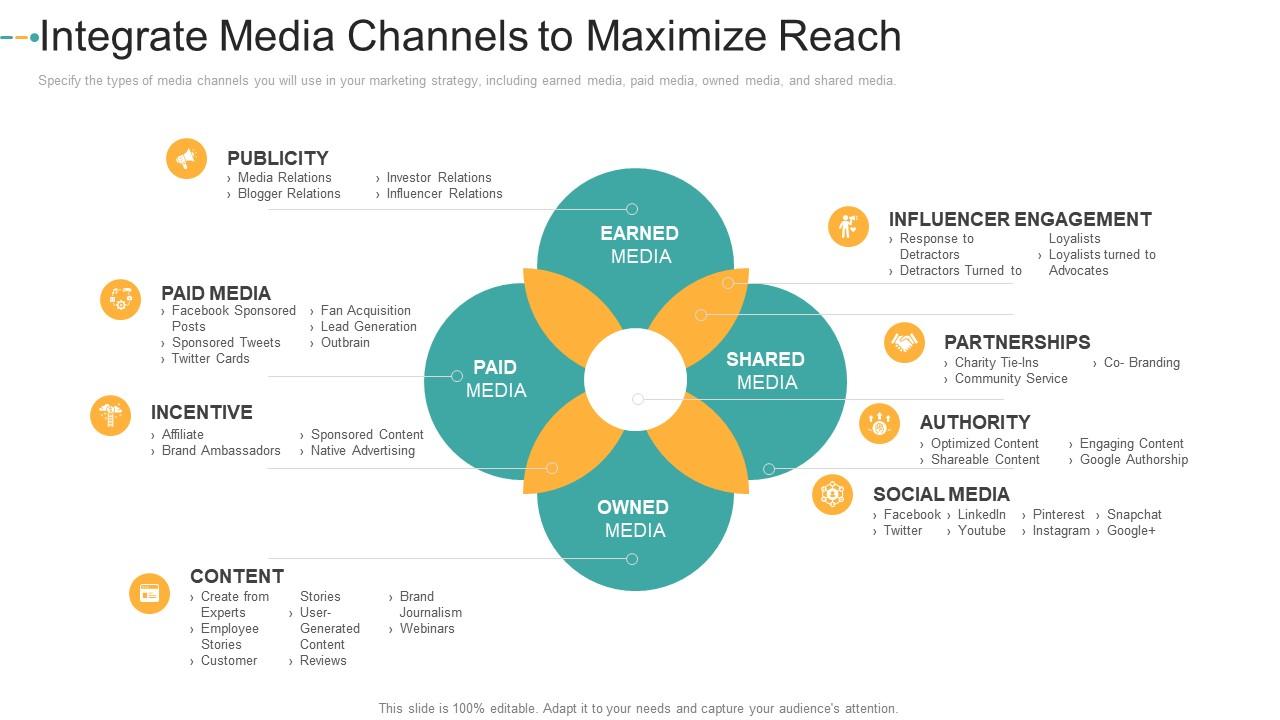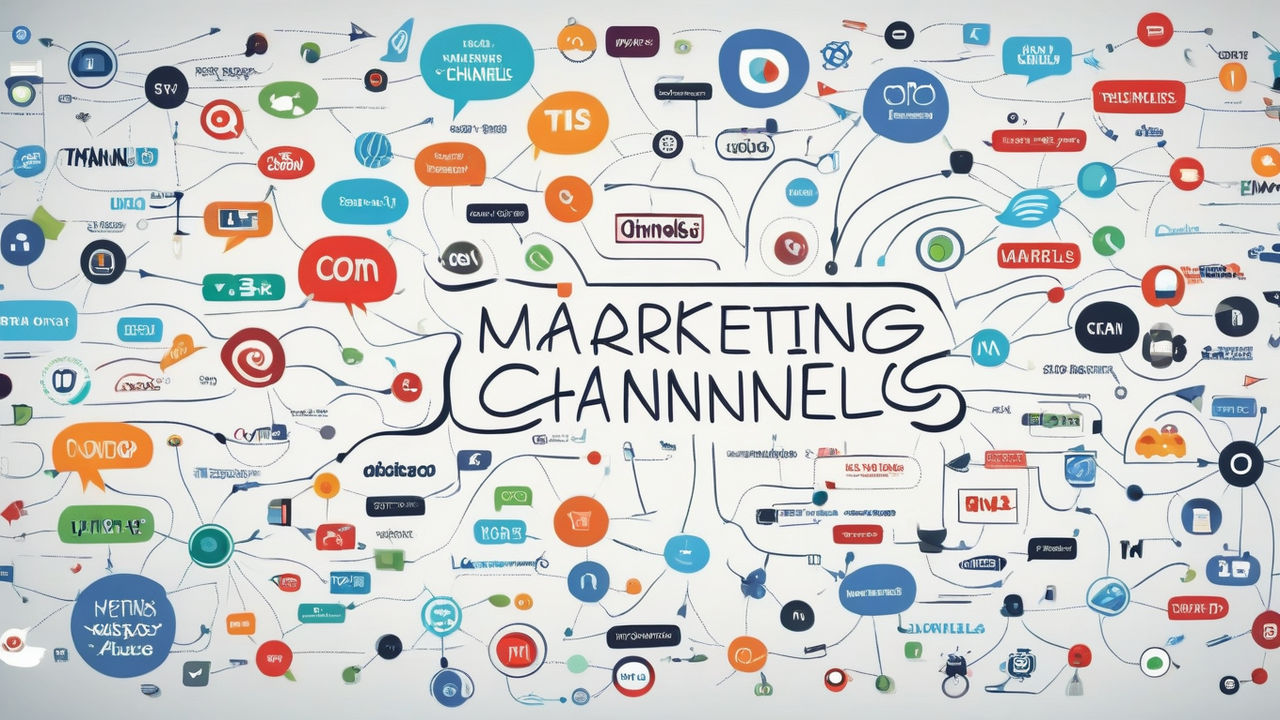Welcome to the World of Marketing Channels

Marketing channels are the lifelines that connect businesses to their audiences. Think of them as the diverse pathways through which you deliver your brand’s message to potential customers. Whether it’s the traditional route of print and broadcast media or the dynamic realm of digital platforms, marketing channels are pivotal in shaping your brand’s outreach and engagement strategies.
Why the Right Marketing Channels Matter
Choosing the right marketing channels isn’t just about visibility—it’s about relevance and impact. The effectiveness of your marketing efforts hinges on how well you understand your audience and where you can best reach them. For instance, targeting a younger demographic might mean leveraging social media platforms like Instagram and TikTok, whereas an older audience might be more effectively reached through email marketing or even traditional print media.
Selecting the right channels also plays a crucial role in maximizing your return on investment (ROI). It’s not just about being present on every platform but about being present where it counts. According to a report by HubSpot, businesses that align their marketing strategies with the right channels see significantly higher engagement rates and better overall performance.
What’s Inside: Your Guide to Mastering Marketing Channels
In this comprehensive guide, we’ll delve into the essentials of marketing channels, exploring both traditional and digital avenues. We’ll cover:
- Understanding Marketing Channels: A deep dive into what marketing channels are and why they’re essential.
- Traditional Marketing Channels: Exploring print advertising, broadcast media, direct mail, and more.
- Digital Marketing Channels: Unpacking social media marketing, email marketing, SEO, content marketing, PPC, and affiliate marketing.
- Choosing the Right Marketing Channels: How to analyze your audience and align your channels for maximum impact.
- Integrating Marketing Channels: Strategies for creating a cohesive, multi-channel approach.
- Case Studies and Future Trends: Real-world examples of successful campaigns and predictions for the future of marketing channels.
Ready to enhance your marketing strategy and reach your audience more effectively? Let’s dive in and uncover the power of well-chosen marketing channels. For further reading, check out these resources from Sprout Social and Neil Patel to expand your understanding of marketing dynamics.
Decoding Marketing Channels
Marketing channels, at their core, are the avenues through which businesses communicate and deliver their products or services to consumers. These channels encompass a broad range of mediums, each offering unique opportunities to connect with your target audience. Understanding these channels is pivotal for crafting an effective marketing strategy that maximizes reach and engagement.
Traditional Marketing Channels

Traditional marketing channels refer to the conventional methods that have been utilized for decades to reach consumers. These include:
- Print Advertising: Newspapers, magazines, and brochures that provide tangible content for readers.
- Broadcast Advertising: Television and radio commercials that capture audiences through audio-visual and auditory means.
- Direct Mail: Physical mailers, catalogs, and flyers sent directly to consumers’ homes or businesses.
- Outdoor Advertising: Billboards, transit ads, and signage that attract attention in public spaces.
- Event Marketing: Hosting or sponsoring events to engage directly with potential customers and create memorable experiences.
Digital Marketing Channels
Digital marketing channels have revolutionized the way businesses interact with their audiences, offering a myriad of options for online engagement. These include:
- Social Media Marketing: Platforms like Facebook, Instagram, Twitter, LinkedIn, and TikTok, where businesses can engage with followers through posts, stories, and ads.
- Email Marketing: Building and nurturing an email list to send targeted campaigns and newsletters directly to subscribers’ inboxes.
- Search Engine Optimization (SEO): Optimizing website content to improve visibility and ranking on search engines like Google.
- Content Marketing: Creating valuable and relevant content, such as blogs, videos, and infographics, to attract and retain a clearly defined audience.
- Pay-Per-Click (PPC) Advertising: Online ads that businesses pay for each time a user clicks on them, commonly seen on search engines and social media platforms.
- Affiliate Marketing: Partnering with affiliates who promote your products or services in exchange for a commission on sales generated through their efforts.
Print Advertising: The Tangible Touch
Print advertising, one of the oldest forms of marketing, continues to hold a significant place in the marketing world. This channel includes newspapers, magazines, brochures, and flyers. The tactile experience of holding a physical advertisement can create a lasting impression.
Newspapers offer broad reach, particularly in local markets, while magazines allow for targeted advertising based on specific interests and demographics. Despite the rise of digital media, print advertising remains effective for its credibility and ability to engage readers in a focused environment.
Broadcast Advertising: Reaching the Masses
Broadcast advertising encompasses television and radio commercials. Television ads are powerful due to their combination of visual and auditory elements, making them highly engaging. They can reach a large and diverse audience, providing an excellent platform for brand storytelling. Radio ads, on the other hand, are cost-effective and can be targeted based on listener demographics and time slots. Both mediums offer wide reach and can significantly boost brand awareness and recall.
Direct Mail: Personal Touch Delivered
Direct mail involves sending promotional materials directly to consumers’ homes or businesses. This can include postcards, catalogs, flyers, and letters. Direct mail offers a personal touch, as recipients physically handle the materials. It can be highly targeted, allowing businesses to tailor their messages to specific segments of their audience. When done correctly, direct mail can achieve high response rates and is especially effective for local marketing campaigns.
Outdoor Advertising: Capturing Public Attention
Outdoor advertising, also known as out-of-home advertising, includes billboards, transit ads, and signage. These ads are strategically placed in high-traffic areas to capture the attention of pedestrians and drivers. Billboards, for example, offer high visibility and can create a significant impact due to their size and bold visuals. Transit ads on buses, trains, and stations reach commuters and travelers, making them ideal for urban areas. Outdoor advertising excels in creating brand awareness and reinforcing brand messages through repeated exposure.
Event Marketing: Creating Memorable Experiences

Event marketing involves businesses hosting or sponsoring events to engage directly with potential customers. This can include trade shows, product launches, conferences, and community events. Event marketing provides an opportunity for face-to-face interaction, allowing businesses to build personal connections with attendees. It creates memorable experiences that can leave a lasting impression and generate word-of-mouth marketing. Events also offer a platform for demonstrating products or services, gathering feedback, and networking with industry peers.
Social Media Marketing: The Digital Hub
Social media marketing is a powerful marketing channel that leverages platforms like Facebook, Instagram, Twitter, LinkedIn, and TikTok to connect with audiences. Each platform offers unique opportunities:
- Facebook: Ideal for community building and targeted ads.
- Instagram: Great for visual storytelling and influencer marketing.
- Twitter: Perfect for real-time updates and customer interaction.
- LinkedIn: Best for B2B marketing and professional networking.
- TikTok: Excellent for reaching younger audiences with short, engaging videos.
Strategies and Best Practices
To succeed in social media marketing, consider these best practices:
- Consistent Branding: Maintain a cohesive look and voice across all platforms.
- Engaging Content: Create high-quality, relevant content that resonates with your audience.
- Interaction: Engage with your followers through comments, likes, and shares.
- Analytics: Use platform analytics to track performance and adjust strategies accordingly.
Email Marketing: Direct and Personal
Email marketing remains a highly effective marketing channel for reaching customers directly.
Building an Email List
Start by collecting email addresses through sign-up forms on your website, social media, and during events. Offer incentives like discounts or exclusive content to encourage sign-ups.
Crafting Effective Email Campaigns
To craft effective campaigns:
- Personalization: Address recipients by name and tailor content to their interests.
- Compelling Subject Lines: Use intriguing subject lines to increase open rates.
- Clear Call-to-Actions (CTAs): Guide recipients towards the desired action, such as visiting a website or making a purchase.
Search Engine Optimization (SEO): Boosting Visibility
SEO is a crucial marketing channel that improves your website’s visibility on search engines like Google.
Importance of SEO
SEO drives organic traffic, enhances credibility, and improves user experience, ultimately leading to higher conversion rates.
On-Page and Off-Page SEO Strategies
- On-Page SEO: Optimize content, meta tags, headers, and images on your website.
- Off-Page SEO: Build backlinks through guest blogging, influencer marketing, and social media engagement.
Content Marketing: Creating Value
Content marketing focuses on creating valuable, relevant content to attract and retain an audience.
Blogging, Video Content, Infographics
- Blogging: Share insightful articles that address your audience’s needs and questions.
- Video Content: Produce engaging videos that demonstrate products or share customer stories.
- Infographics: Use visual data representations to simplify complex information.
Importance of Value-Driven Content
Value-driven content establishes your brand as an authority, fosters trust, and encourages customer loyalty.
Pay-Per-Click (PPC) Advertising: Targeted Reach
PPC advertising is a cost-effective marketing channel that includes Google Ads and social media ads.
Budgeting and Targeting Strategies
- Budgeting: Allocate budget based on campaign goals and platform performance.
- Targeting: Use demographic, geographic, and behavioral data to reach the right audience.
Affiliate Marketing: Expanding Reach
Affiliate marketing involves partnering with affiliates who promote your products or services.
Building a Network of Affiliates
Recruit affiliates through affiliate networks or direct outreach. Offer attractive commissions and provide marketing materials.
Tracking and Optimizing Affiliate Performance
Use tracking software to monitor affiliate sales and optimize their performance through regular feedback and support.
Choosing the Right Marketing Channels: A Strategic Approach

Selecting the appropriate marketing channels is crucial for maximizing your marketing efforts. Here’s how to choose the right channels for your business:
Analyzing Your Target Audience
Understanding your target audience is the foundation of any successful marketing strategy. Conduct thorough research to gather insights into your audience’s demographics, behaviors, preferences, and pain points. Consider factors such as age, gender, income level, geographic location, and interests. Tools like customer surveys, social media analytics, and market research reports can provide valuable data to help you define and segment your audience effectively.
Matching Channels to Audience Preferences
Once you have a clear picture of your target audience, the next step is to match your marketing channels to their preferences. Different demographics and psychographics respond differently to various marketing channels. For instance:
- Younger Audiences: Often prefer social media platforms like Instagram, TikTok, and Snapchat. They are more likely to engage with visual and interactive content.
- Professionals and B2B Audiences: LinkedIn and email marketing are highly effective for reaching these groups.
- Local Audiences: Direct mail, local print advertising, and outdoor advertising work well for targeting specific geographic areas.
- Broad, Diverse Audiences: Television and radio can provide extensive reach and are effective for brand awareness campaigns.
Budget Considerations
Budget plays a critical role in determining which marketing channels to use. Some channels require significant investment, while others are more cost-effective. Here’s a breakdown of budget considerations for various channels:
- High-Cost Channels: Television, radio, and large-scale outdoor advertising can be expensive but offer broad reach and high impact.
- Moderate-Cost Channels: Social media advertising, PPC campaigns, and event marketing fall into this category, providing a balance between cost and reach.
- Low-Cost Channels: Email marketing, content marketing, and SEO are relatively affordable and can yield high returns with consistent effort and optimization.
Allocate your budget based on your marketing goals, the cost-effectiveness of each channel, and the expected ROI. It’s also wise to keep a portion of your budget flexible to adapt to changing market conditions and emerging opportunities.
Measuring Channel Effectiveness
To ensure you’re getting the most out of your chosen marketing channels, it’s essential to measure their effectiveness regularly. Here are key metrics to track:
- Reach: The total number of people who see your content or advertisements.
- Engagement: Interactions such as likes, comments, shares, and clicks.
- Conversion Rates: The percentage of users who take a desired action, such as making a purchase or signing up for a newsletter.
- Return on Investment (ROI): The overall return generated from your marketing spend.
Use analytics tools and software to gather data and generate reports. Google Analytics, social media insights, and marketing automation platforms can provide comprehensive metrics to evaluate performance. Regularly review these metrics to identify what’s working, what’s not, and where adjustments are needed.
Integrating Marketing Channels: Building a Unified Strategy
Integrating multiple marketing channels into a cohesive strategy can significantly enhance your brand’s reach and effectiveness. Here’s how to create a seamless multi-channel marketing approach:
Creating a Cohesive Multi-Channel Strategy
A multi-channel strategy involves using various marketing channels in a coordinated manner to reach and engage your audience. Here are the steps to create an effective multi-channel strategy:
- Identify Your Goals: Clearly define what you aim to achieve with your marketing efforts. This could be increasing brand awareness, driving website traffic, generating leads, or boosting sales.
- Select Appropriate Channels: Based on your target audience analysis, choose the channels that align best with your audience’s preferences and your marketing goals. Ensure you have a mix of traditional and digital channels to maximize reach.
- Develop a Content Plan: Create a comprehensive content plan that outlines the type of content you will share on each channel. Ensure the content is tailored to the format and audience of each platform while maintaining a unified theme.
- Allocate Resources: Determine the budget, tools, and personnel needed for each channel. Ensure you have the resources to maintain a consistent presence across all chosen platforms.
- Create Integrated Campaigns: Develop campaigns that utilize multiple channels to convey a unified message. For example, a product launch campaign could include a mix of social media posts, email newsletters, print ads, and a dedicated landing page.
Ensuring Consistent Messaging Across Channels
Consistency in messaging is crucial for building a strong brand identity and ensuring your audience receives a clear, cohesive message. Here’s how to maintain consistency:
- Brand Guidelines: Develop and adhere to brand guidelines that define your brand’s voice, tone, style, and visual identity. This ensures all communications reflect your brand consistently.
- Unified Messaging: Ensure that your core message remains the same across all channels. While the format may change (e.g., a detailed blog post vs. a short social media update), the key points and brand voice should remain consistent.
- Cross-Channel Promotion: Promote your content across different channels to reinforce your message. For example, share your blog posts on social media, include them in email newsletters, and mention them in your direct mail campaigns.
- Integrated Tools: Use integrated marketing tools and platforms that allow you to manage and schedule content across multiple channels. This helps streamline the process and maintain consistency.
Utilizing Data and Analytics to Optimize Performance
Data and analytics are essential for understanding how your multi-channel strategy is performing and where improvements can be made. Here’s how to leverage data:
- Track Key Metrics: Identify and monitor key performance indicators (KPIs) for each channel. Common metrics include reach, engagement, conversion rates, and ROI.
- Centralize Data: Use analytics tools that consolidate data from all your marketing channels into one dashboard. This provides a holistic view of your marketing performance and helps identify trends and patterns.
- Analyze Audience Behavior: Use data to gain insights into your audience’s behavior and preferences. This includes understanding which channels they interact with most and what type of content resonates best with them.
- Adjust Strategies: Regularly review your analytics to assess the effectiveness of your campaigns. Use these insights to tweak your strategies, such as reallocating budget to high-performing channels or adjusting your content plan.
- A/B Testing: Conduct A/B tests to compare different versions of your content or ads to see which performs better. This helps optimize your campaigns based on real data.
